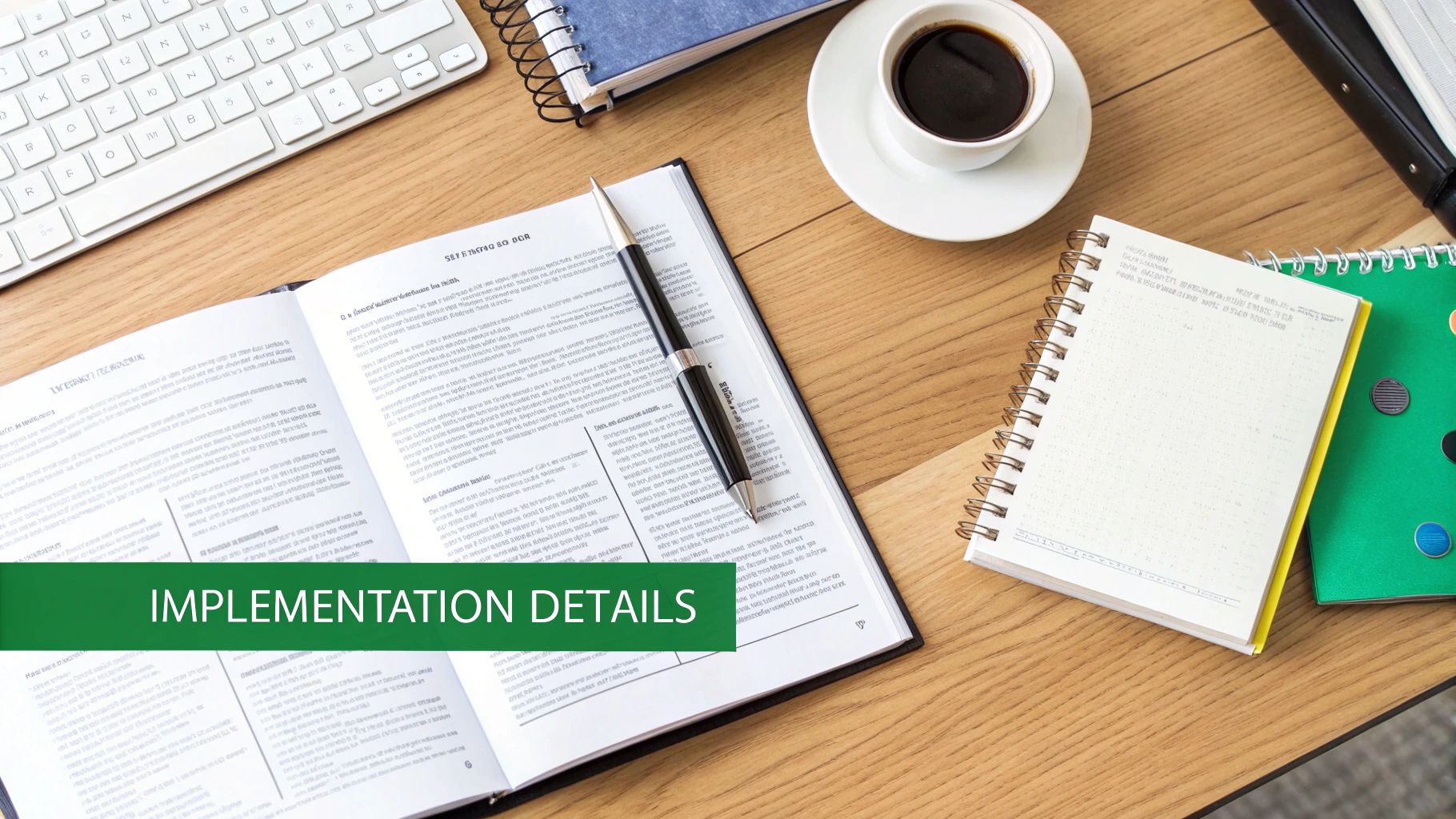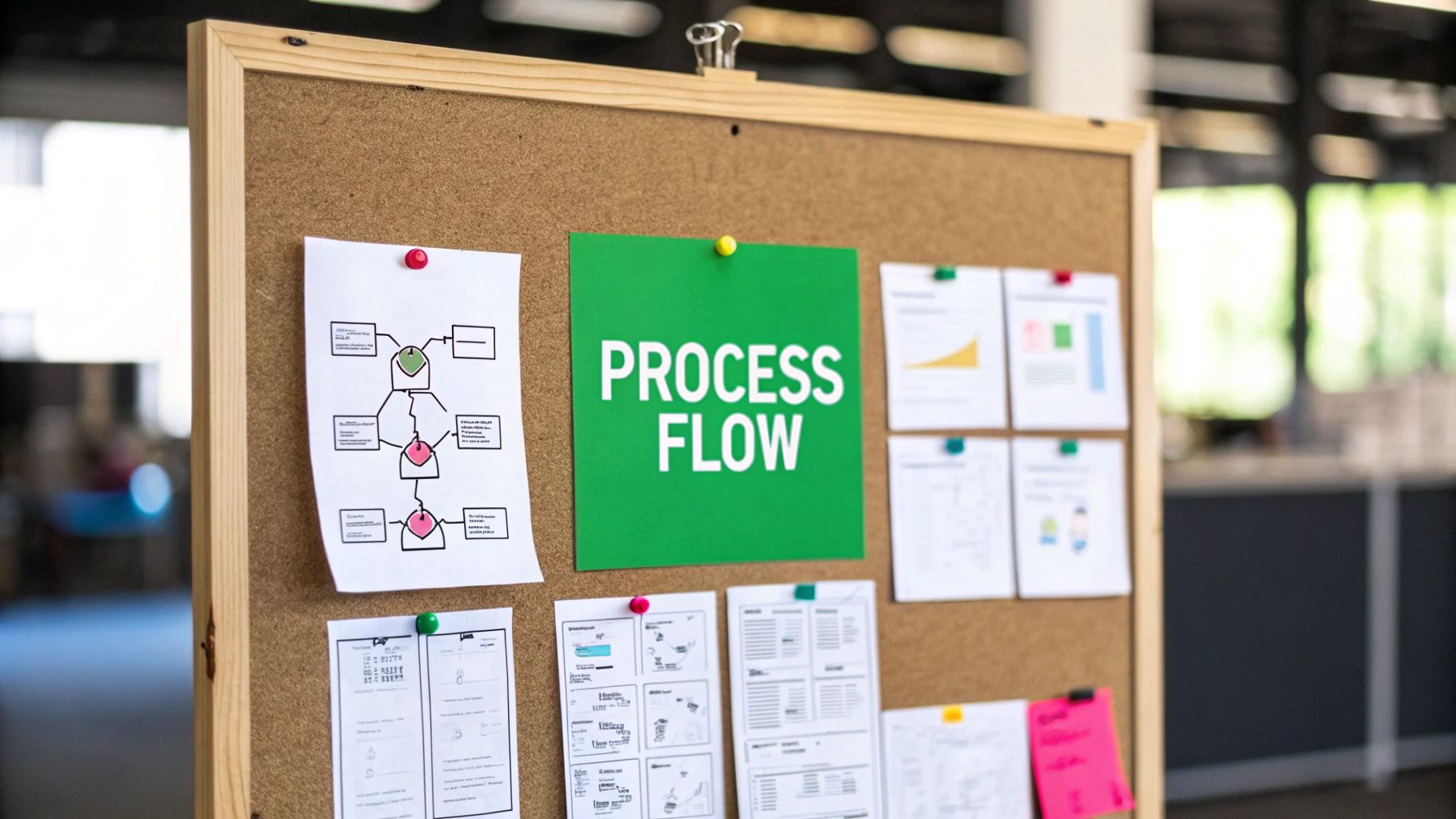Master software architecture documentation with proven templates and strategies. Learn how to create comprehensive, maintainable documentation that enhances team collaboration and system understanding.
A well-crafted software architecture document is essential for any project’s success. It serves as the master plan that keeps development teams aligned and working efficiently toward shared goals. While documentation is vital, starting from scratch every time isn’t practical. That’s where software architecture documentation templates become invaluable - they give teams a proven framework to build upon.
Templates offer clear benefits for documentation work. They provide a ready-made structure that lets teams focus on documenting the actual architecture rather than reinventing the documentation format. This is especially helpful for larger organizations where multiple teams need to create consistent documentation that others can easily understand. Good templates also act as checklists, making sure teams don’t accidentally skip important architectural details.
Teams can choose from several established documentation templates, each designed for different needs. The arc42 template, created by Gernot Starke and Peter Hruschka, offers a practical approach with 12 key sections that teams can customize. It’s free to use and available in multiple languages. Other popular options include the C4 model for visualizing software architecture and the Microsoft Architecture Framework for enterprise systems. Learn more about software architecture documentation.

While templates provide an excellent starting point, they work best when customized for your specific project. Consider which sections make sense for your needs and adjust accordingly. A small project might need a lighter version of the template compared to a complex enterprise system. Remember that documentation should evolve with your project - regular updates ensure it remains useful throughout development. The key is creating documentation that truly helps your team rather than following a template exactly.
Every software architecture needs a strong documentation framework. Let’s explore the key components that make documentation effective and practical for teams.
A system context diagram shows how your software fits into the bigger picture. Like a city map, it displays connections between your system and external parts - users, other systems, and data sources. Teams find this overview incredibly helpful for understanding project scope and system boundaries.
Deployment views show exactly how to set up your system in practice. These detailed maps help DevOps teams and administrators configure everything correctly. A good deployment view reveals which components belong on specific servers, how they talk to each other, and what network settings they need.
Think of component diagrams as detailed blueprints that show how different parts of your system work together. They break down complex systems into smaller, understandable pieces. Developers rely on these diagrams to see how each part connects and functions within the whole system.
Good documentation explains both what a system does and why it was built that way. Recording architectural decisions helps teams avoid past mistakes and stay true to the original design goals. This proves especially valuable when new team members join - studies show proper documentation can cut onboarding time by up to 50%. Learn more about effective architecture documentation.
Remember that documentation needs change with each project. Your templates should flex to match your specific needs. Make documentation updates part of your regular workflow to keep everything current and useful. Tools like DocuWriter.ai can help automate this process, making it easier to maintain accurate documentation throughout your project’s life.

Documentation can be challenging in fast-paced Agile development. But with the right approach, software architecture templates can work smoothly within Agile workflows. Let’s look at practical ways to make documentation fit naturally into your Agile process.
Static documentation quickly becomes outdated when requirements change frequently. The solution is living documentation - documentation that evolves alongside your code. Tools like DocuWriter.ai can help by automating documentation updates and connecting directly to your codebase. This keeps everything in sync as your project grows.
Documentation works best when the whole team contributes. Set up shared platforms where everyone can easily access and update documentation. Make it clear that maintaining good documentation is everyone’s job, not just assigned to one person. Regular team reviews help catch gaps and keep everything current.
Focus on documenting what matters most - key architectural decisions and core components. Skip the unnecessary details that slow teams down. At the same time, maintain a consistent style and format across all documentation. This makes it easy for team members to find what they need quickly.
Here are concrete ways to make documentation work in your Agile sprints:
Creating software architecture documentation requires careful consideration of your audience. Each stakeholder group has specific needs and ways they process technical information. By developing focused documentation for different groups, you ensure everyone gets exactly what they need to understand and work with the architecture effectively.
Start by mapping out who needs what information from your documentation. C-level executives want clear links between architecture choices and business outcomes. They need high-level summaries focused on value and strategy. In contrast, development teams require detailed technical specifications and implementation guidelines. Analyzing these different needs helps you create documentation that truly serves each group.
Consider using established templates like arc42 as your starting point, but modify them for each audience. For executives, create brief overviews that connect technical decisions to business benefits, perhaps using visual presentations. For developers, provide comprehensive documentation with detailed diagrams, code samples, and complete API specifications that guide their daily work.
While adapting content for different groups, keep core messages and terms consistent throughout all documentation. Create a central glossary and use it across all materials to prevent confusion. Make it easy to move between high-level and detailed content by linking related sections. Tools like DocuWriter.ai can help maintain this consistency as you update documentation over time. When all layers of documentation align, stakeholders develop a shared understanding of the architecture, regardless of their technical background.
Creating and maintaining software architecture documentation requires the right tools - especially as projects grow larger and more complex. Let’s explore how current tools help teams better manage their software architecture documentation templates.
Many teams started with simple wiki systems for documentation. While wikis enable collaborative editing, they often miss key features like version tracking and automated updates, leading to outdated or inconsistent information. Documentation-as-code approaches offer a better solution by treating documentation like source code - storing it in repositories alongside project code for version control, automated builds, and even automated testing.
Modern documentation platforms provide several important benefits for managing architecture documentation:
The right documentation tool depends on your team size, project complexity, and current processes. Here’s how common options compare:
Tools like DocuWriter.ai use AI to speed up creating and maintaining software architecture documentation. The platform can automatically generate documentation from code while ensuring accuracy and consistency with templates like arc42. This lets teams focus more on architecture design rather than manual documentation tasks. By using these tools effectively, teams can build documentation that stays current with their project and supports more maintainable software systems.

Creating effective software architecture documentation requires more than just following a template. Success comes from understanding common challenges, implementing proven solutions, and learning from real-world experiences.
Different team members often write with varying styles and detail levels, making consistency a major challenge. Implementing a style guide and standard terminology helps maintain a unified voice across all documentation. Using established templates like arc42 provides helpful structure and organization.
Keeping documentation current is another key challenge. As code changes rapidly during development sprints, documentation updates often get left behind. The solution is making documentation part of your regular workflow - tie updates to sprint milestones and use tools like DocuWriter.ai to help automate the process.
Documentation needs to be useful and accessible, or teams simply won’t use it. Focus on making it easy to find, search, and apply to daily work. Store all documentation in one central location that connects smoothly with your existing tools. Set up regular reviews to remove outdated content and keep information relevant.
You might be interested in: How to master software documentation best practices.
Track clear metrics to evaluate if your documentation works. Monitor how often docs are accessed, time spent reading, and team feedback on usefulness. Look at how quickly new team members can get up to speed using the docs. These insights help identify what needs improvement and show the real value of good documentation.
Ready to improve your documentation process? See how DocuWriter.ai can help automate and enhance your software documentation workflow.
